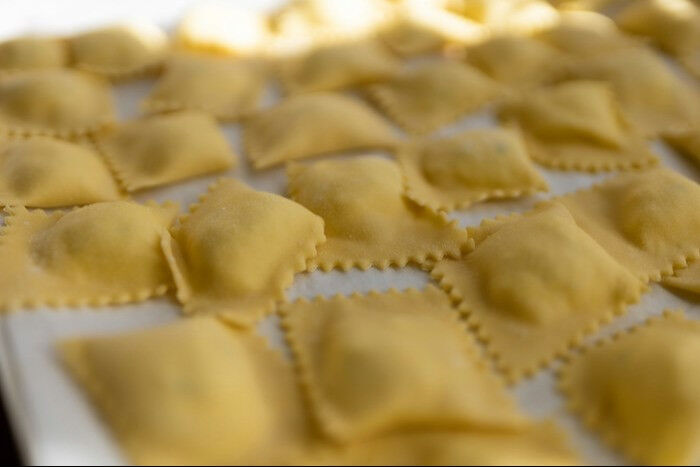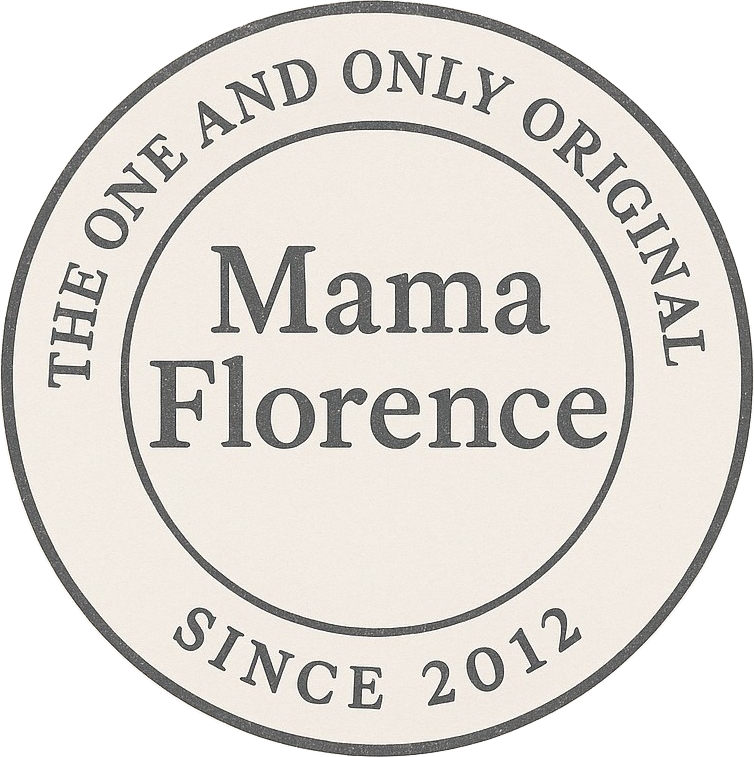Mastering Gluten-Free Pasta: A Guide to Making Authentic Italian Pasta without Gluten

Gluten-free pasta is no longer just a compromise for those with dietary restrictions—it has become an exciting culinary adventure. Whether you are gluten intolerant, have celiac disease, or are simply looking to explore new grains, making gluten-free pasta at home is easier and tastier than you might think. At Mama Florence, we celebrate authentic Italian cuisine, and that includes teaching how to make delicious gluten-free pasta with traditional and innovative flours. This guide will walk you through key techniques, flours, and tips for making your own gluten-free pasta, ensuring that you don’t miss out on Italy’s most beloved food.
Ensuring Safe Gluten-Free Cooking: Cross-Contamination Rules
At Mama Florence, we are dedicated to providing a safe and enjoyable environment for those with gluten sensitivities. While our kitchen is used for different classes at various times, including those that involve regular flour, we follow strict rules to minimize cross-contamination during our gluten-free classes. However, because the kitchen is not 100% gluten-free, those with severe sensitivities should evaluate based on their condition.
Here are the steps we take to ensure your safety:
- Separate Utensils: We use dedicated utensils that are never used with gluten-containing products.
- Only Gluten-Free Ingredients: Every ingredient in our gluten-free classes is specifically selected to be gluten-free.
- Separate Storage: Both utensils and ingredients for gluten-free cooking are stored separately from gluten-containing items.
- Clean Aprons: All aprons are freshly cleaned and washed before use.
- Sanitized Surfaces: All surfaces and pots are carefully sanitized and checked before class to eliminate any potential gluten residue.
- No Gluten in the Class: During gluten-free classes, no flour or gluten-containing products are used to maintain a safe cooking environment.
Choosing the Right Flours for Gluten-Free Pasta
The first step in making gluten-free pasta is selecting the appropriate flour. Here are some of the most popular and effective gluten-free flour options for pasta-making:
- Rice Flour: Often used as a base for many gluten-free pasta recipes, rice flour provides a smooth and mild flavor. It’s ideal for producing a tender dough, which can be paired with lighter sauces such as aglio e olio (garlic and olive oil).
- Corn Flour: Corn flour is frequently combined with rice flour to add structure and texture to gluten-free pasta. It’s commonly used in Southern Italy and pairs well with robust sauces like ragu or amatriciana.
- Buckwheat Flour: Buckwheat, or grano saraceno, is a favorite in Northern Italy. It is used to make Pizzoccheri, a ribbon-like pasta from Lombardy, traditionally served with potatoes, cabbage, and cheese. Buckwheat adds a hearty, nutty flavor that pairs well with richer, creamy sauces.
- Chickpea Flour: A great source of protein and fiber, chickpea flour is becoming increasingly popular in gluten-free pasta making. It adds an earthy flavor and dense texture, making it perfect for pairing with vegetable-based sauces or a simple tomato sauce.
- Sorghum or Teff Flour: These ancient grains are becoming more mainstream due to their nutritional value and gluten-free properties. Sorghum and teff are excellent options for adding more depth of flavor to your pasta, and they work well with savory sauces like carbonara or pesto.
Technique: How to Make Gluten-Free Pasta Dough
The process for making gluten-free pasta is very similar to traditional pasta, with a few key differences. Here’s a basic method for making gluten-free pasta dough:
- Mix the Flours: Combine your chosen gluten-free flours with a binding agent, such as xanthan gum or psyllium husk, which will help mimic the elasticity of gluten. This is crucial for achieving that perfect dough texture that can be rolled out without crumbling.
- Add Liquids: For gluten-free pasta, eggs are the go-to liquid, providing both moisture and structure. Typically, you’ll want to follow the ratio of one egg per 100 grams of gluten-free flour. If the dough is too dry, you can add a small amount of water or olive oil to help it come together.
- Kneading the Dough: Unlike traditional wheat-based dough, gluten-free dough doesn't require extensive kneading. Knead it gently until it's well combined and smooth but avoid overworking it.
- Resting the Dough: Allow the dough to rest for about 30 minutes. Resting is crucial for letting the flour fully hydrate and makes it easier to roll out.
- Rolling and Shaping: When rolling out gluten-free pasta dough, use a rolling pin or a pasta machine. You’ll notice that gluten-free dough is more delicate, so take your time and dust with extra flour as needed to prevent sticking.
Cooking Gluten-Free Pasta
Cooking gluten-free pasta is a little different from traditional pasta. Here are some tips to ensure it turns out perfectly:
- Generous Salting: As with all pasta, the water should be heavily salted to season the dough while it cooks.
- Gentle Boiling: Gluten-free pasta tends to be more fragile, so ensure the water is simmering rather than rapidly boiling. Stir gently to prevent the pasta from sticking together.
- Cook Time: Gluten-free pasta cooks more quickly than traditional pasta, so keep an eye on it. It can go from perfect to mushy quickly.
- Finishing in the Sauce: Just like traditional pasta, gluten-free pasta benefits from being finished in the sauce. This allows it to absorb more flavor and prevents it from drying out after being drained.
Pasta Shapes and Sauces for Gluten-Free Pasta
- Long Pasta (e.g., spaghetti, fettuccine): These shapes are best paired with lighter sauces like olive oil-based sauces, garlic and chili (aglio e peperoncino), or seafood sauces.
- Short Pasta (e.g., penne, rigatoni): Short pasta works well with heartier sauces such as ragù, Bolognese, or pesto.
- Filled Pasta (e.g., ravioli, tortellini): Gluten-free filled pasta can be made by rolling the dough thinly and filling it with classic ingredients like ricotta and spinach. Serve it with a sage butter sauce or simple tomato sauce.
The Nutritional Benefits of Gluten-Free Pasta
While traditional pasta is rich in carbohydrates, gluten-free pasta made with alternative flours often provides added nutritional benefits. Flours like buckwheat, chickpea, and teff are high in protein, fiber, and essential nutrients like iron and magnesium, making gluten-free pasta a healthy option for everyone.
Learn Gluten-Free Pasta Making at Mama Florence
At Mama Florence, we offer hands-on cooking classes that teach you how to make gluten-free pasta using traditional Italian techniques. Whether you’re new to pasta-making or looking to expand your skills, our expert chefs will guide you through the process, ensuring that you leave confident in your ability to recreate delicious gluten-free dishes at home.
Our gluten-free pasta-making classes allow you to explore various flour options, experiment with different shapes, and learn how to pair pasta with the perfect sauce. Join us for an authentic culinary experience that blends tradition with innovation.
Conclusion
Making gluten-free pasta at home doesn’t mean sacrificing flavor or texture. With the right ingredients, techniques, and guidance, you can master the art of gluten-free pasta-making and enjoy all the richness of Italian cuisine. Whether you're using buckwheat for hearty pizzoccheri or crafting delicate chickpea flour spaghetti, gluten-free pasta opens up a world of culinary possibilities. And if you’re serious about learning these skills, there’s no better place than Mama Florence to begin your pasta-making journey.

